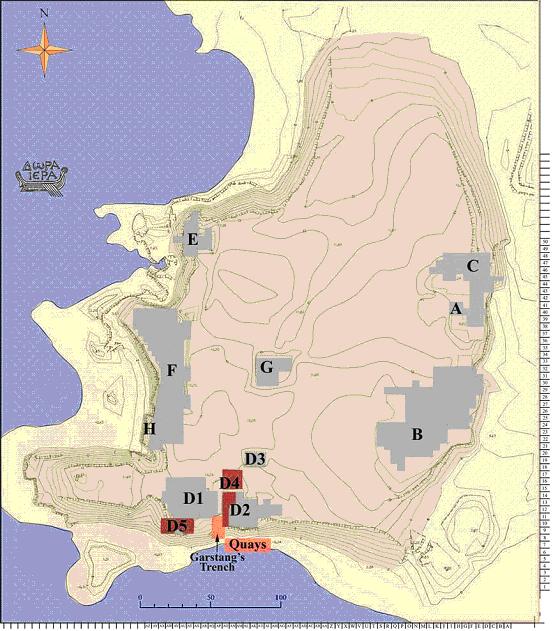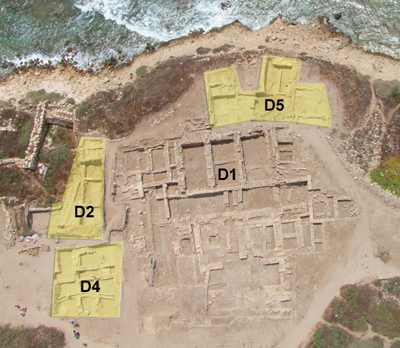Dor 2008 Preliminary Report
Introduction
The season
The twenty-sixth season of excavations at Dor was held on June 15 – August 1 2007. It was sponsored by the Israel Exploration Society and five academic institutions – The Hebrew University of Jerusalem (henceforward: HU), Haifa University (UH), the Weitzman Institute of Science (WIS), The University of Washington, Seattle (UW) and the University of South Africa (UNISA). The season consisted of a staff / publication season of two weeks (which concentrated, this year, on publication of areas B1 and G of Stern’s excavations); followed by a four-week field season. It was supported by endowments, grants and donations from the Berman Institute of Biblical Archaeology, the Zinman Institute of Archaeology, the University of Washington (in the form of travel grants and student scholarships), the Goldhirsh foundation (the “Wendy Goldhirsh Dor Fellowships” funded three graduate students during the season and throughout the ensuing year) and several anonymous donors. Additional activities that took place during the season (though not excavation itself) were funded by the Israel Science Foundation (Archaeozoology, 3D imaging of artifacts), and the White-Levy program for Archaeological Publication (publication of the Iron Age strata of Area B).
The expedition was lodged at the Nahsholim Seaside Resort and working facilities were extended by the CONRAD (Ha-Mizgaga) museum at Kibbutz Nahsholim and its director, Israel Hirshberg.
Students and Volunteers
The mainstays of the volunteer force were the UW team (about 30), a group recruited by Liz Bloch-Smith from (mainly) East-Coast colleges (about 10), and about 10 South Africans jointly recruited by UNISA and the magazine ‘Voyage of the Planet’. To this were added 10 Haifa University study-excavation students (last two weeks); and a number of ‘individual’ volunteers. Two field-schools were held on-site: an English-speaking field school run by UW, and a Haifa University study excavation course.
Excavation Strategy and Excavation Areas
Continuing the strategy begun in 2004 (Sharon et al 2006; 2004 report) excavation was concentrated in three sub-areas of area D, on the south-west corner of the mound (Figures 1, 2).

Figure 1: map of the tell and the excavation areas.

Figure 2: Areas excavated in 2008.
- -- Table of Content -- |
- -- Top -- |
- -- Continue to Roman, Hellenistic and Persian Periods --